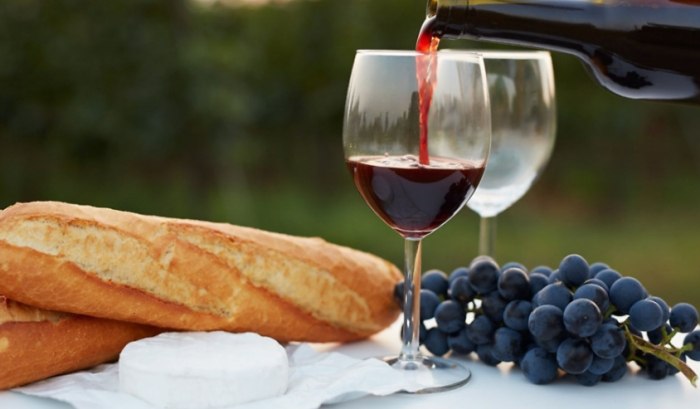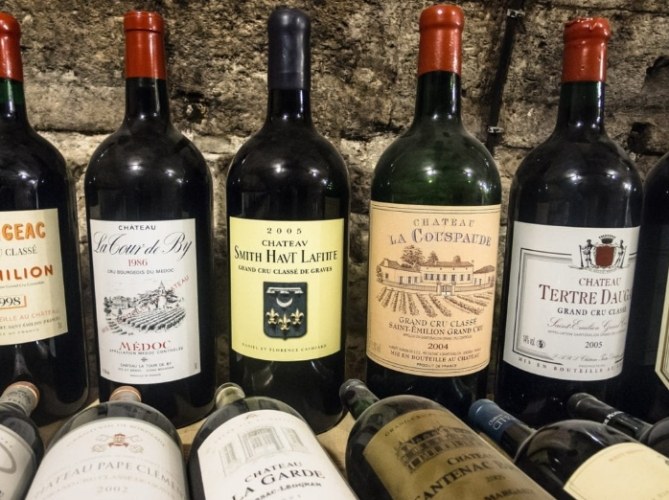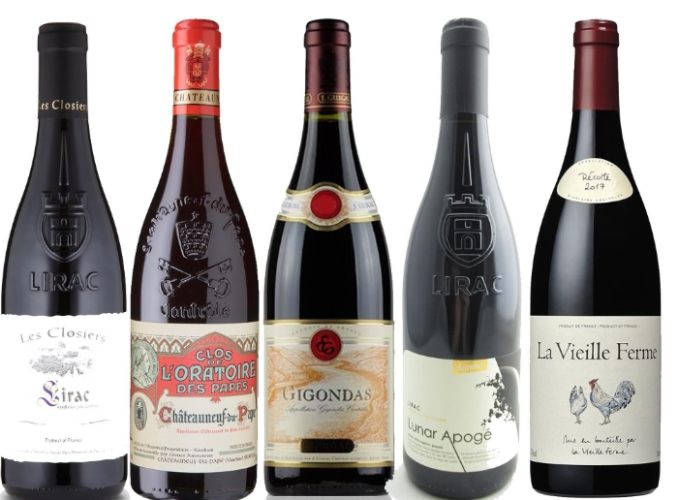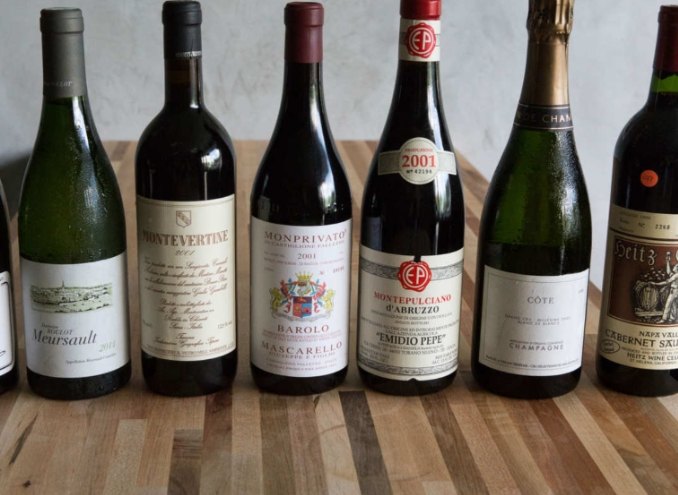French Red Wine: Top Regions, Best Vintages & Food Pairings
Advertisements
Curious about French Red Wine? Explore Bordeaux blends, Burgundy Pinot Noirs, and Rhône Valley gems—learn tasting notes, aging potential, and food pairings. Discover top vineyards from Médoc to Provence, decoding AOC labels and vintage charts. Whether you're a collector or casual sipper, master the art of selecting, storing, and savoring France's legendary reds like a true connoisseur!
Table of Contents
Introduction
As a proud resident of France, a country often dubbed the "wine capital of the world," I feel an immense sense of pride and responsibility when it comes to sharing the rich tapestry of our red wine heritage. French red wine is not merely a beverage; it is an embodiment of our history, culture, and artisanal craftsmanship. From the rolling vineyards of Bordeaux to the sun-drenched slopes of Burgundy, each bottle tells a unique story, shaped by centuries of tradition and innovation. In this comprehensive guide, I will take you on a journey through the world of French red wine, exploring its historical roots, core production processes, beloved home recipes, perfect food pairings, regional characteristics, and must-visit restaurants. By the end of this article, you will not only have a deeper appreciation for French red wine but also the knowledge to savor it like a true connoisseur.
Historical Roots of French Red Wine

Ancient Origins
The history of French red wine dates back to the ancient Greeks and Romans, who were among the first to cultivate vines in what is now modern-day France. The Romans, in particular, played a pivotal role in spreading viticulture across the country, establishing vineyards in regions like Burgundy and Bordeaux. These early settlers recognized the unique terroir—a combination of soil, climate, and topography—that made France an ideal location for wine production.
Medieval Evolution
During the Middle Ages, the Catholic Church became a major patron of winemaking. Monasteries across France cultivated vineyards to produce wine for religious ceremonies, and monks played a crucial role in refining winemaking techniques. The Cistercian order, in particular, was known for its meticulous approach to viticulture, emphasizing the importance of soil quality and grape selection. This period saw the emergence of distinct wine regions, each with its own characteristics and styles.
Renaissance and Modernization
The Renaissance brought about a renewed interest in the arts and sciences, which also influenced winemaking. Advances in technology and a deeper understanding of grape varieties led to the development of more sophisticated winemaking methods. By the 18th and 19th centuries, French red wine had gained international acclaim, with regions like Bordeaux and Burgundy becoming synonymous with quality and prestige. The establishment of appellation d'origine contrôlée (AOC) regulations in the 20th century further solidified France's reputation as a leader in the wine world, ensuring that only wines produced in specific regions and according to strict guidelines could bear the AOC label.
Core Production Processes of French Red Wine

Vineyard Management
The journey of French red wine begins in the vineyard, where meticulous attention to detail is paramount. Vineyard managers carefully select grape varieties based on the region's terroir, with popular red grape varieties including Cabernet Sauvignon, Merlot, Pinot Noir, and Syrah. Pruning, trellising, and canopy management are crucial practices that ensure optimal sunlight exposure and air circulation, promoting healthy grape growth.
Harvesting
Harvesting, or vendange, is a critical moment in the winemaking process. Grapes are typically harvested by hand to ensure that only the best-quality fruit is selected. The timing of the harvest is carefully planned based on factors such as sugar levels, acidity, and tannin development. In some regions, night harvesting is practiced to preserve the freshness and acidity of the grapes.
Vinification
Once harvested, the grapes are transported to the winery, where they undergo vinification. The process begins with destemming and crushing the grapes to release the juice. Fermentation then takes place, with yeast converting the sugar in the grape juice into alcohol. In red wine production, the grape skins remain in contact with the juice during fermentation, imparting color, tannins, and flavor compounds. This maceration process can last anywhere from a few days to several weeks, depending on the desired style of wine.
Aging
After fermentation, the wine is often aged in oak barrels or stainless steel tanks. Aging in oak barrels adds complexity and depth to the wine, imparting flavors of vanilla, spice, and toast. The length of aging varies depending on the region and the style of wine. For example, Bordeaux red wines are often aged for 18-24 months in oak, while Burgundy Pinot Noirs may be aged for a shorter period to preserve their delicate fruit flavors.
Bottling and Labeling
Once the aging process is complete, the wine is bottled and labeled. French red wines are subject to strict labeling regulations, which provide consumers with information about the wine's origin, grape variety, and vintage. The AOC label, in particular, is a mark of quality and authenticity, indicating that the wine has been produced in accordance with the region's specific guidelines.
Homemade French Red Wine Recipes and Techniques

Classic Beef Bourguignon
One of the most iconic French dishes that pairs beautifully with red wine is beef bourguignon. This hearty stew features tender beef slow-cooked in red wine, bacon, mushrooms, and onions. Here's a simple recipe to try at home:
Ingredients
- 2 lbs beef chuck, cut into 2-inch cubes
- 4 slices bacon, diced
- 1 large onion, chopped
- 2 carrots, peeled and chopped
- 2 cloves garlic, minced
- 1 bottle French red wine (such as Burgundy or Côtes du Rhône)
- 2 cups beef broth
- 2 tbsp tomato paste
- 1 tbsp all-purpose flour
- 1 tbsp olive oil
- 1 tsp fresh thyme leaves
- 1 bay leaf
- Salt and pepper to taste
- 8 oz mushrooms, sliced
- 2 tbsp butter
Instructions
- Preheat the oven to 325°F (160°C).
- In a large Dutch oven or oven-safe pot, cook the bacon over medium heat until crispy. Remove the bacon with a slotted spoon and set aside.
- Season the beef cubes with salt and pepper. In the same pot, brown the beef in the bacon fat over medium-high heat, working in batches if necessary. Remove the beef and set aside.
- Add the onion, carrots, and garlic to the pot and cook until softened, about 5 minutes.
- Stir in the tomato paste and flour, cooking for an additional 1-2 minutes.
- Pour in the red wine and beef broth, scraping up any browned bits from the bottom of the pot.
- Return the beef and bacon to the pot, along with the thyme and bay leaf. Bring to a simmer, then cover and transfer to the oven.
- Cook for 2-2.5 hours, or until the beef is tender.
- In a separate skillet, melt the butter over medium heat. Add the mushrooms and cook until golden brown, about 5-7 minutes.
- Stir the mushrooms into the stew and season with additional salt and pepper to taste.
- Serve the beef bourguignon hot, accompanied by crusty bread or mashed potatoes.
Coq au Vin
Coq au vin is another classic French dish that showcases the versatility of red wine. This chicken stew, traditionally made with a rooster, features tender chicken cooked in red wine, mushrooms, onions, and bacon. Here's a simplified version using chicken thighs:
Ingredients
- 4 chicken thighs, bone-in and skin-on
- 4 slices bacon, diced
- 1 large onion, chopped
- 2 carrots, peeled and chopped
- 2 cloves garlic, minced
- 1 bottle French red wine (such as Burgundy or Côtes du Rhône)
- 1 cup chicken broth
- 1 tbsp all-purpose flour
- 1 tbsp olive oil
- 1 tsp fresh thyme leaves
- 1 bay leaf
- Salt and pepper to taste
- 8 oz mushrooms, sliced
- 2 tbsp butter
- Fresh parsley, chopped (for garnish)
Instructions
- Preheat the oven to 325°F (160°C).
- In a large Dutch oven or oven-safe pot, cook the bacon over medium heat until crispy. Remove the bacon with a slotted spoon and set aside.
- Season the chicken thighs with salt and pepper. In the same pot, brown the chicken skin-side down over medium-high heat until golden brown, about 5-7 minutes. Flip and cook for an additional 2-3 minutes. Remove the chicken and set aside.
- Add the onion, carrots, and garlic to the pot and cook until softened, about 5 minutes.
- Stir in the flour, cooking for an additional 1-2 minutes.
- Pour in the red wine and chicken broth, scraping up any browned bits from the bottom of the pot.
- Return the chicken and bacon to the pot, along with the thyme and bay leaf. Bring to a simmer, then cover and transfer to the oven.
- Cook for 45 minutes to 1 hour, or until the chicken is cooked through and tender.
- In a separate skillet, melt the butter over medium heat. Add the mushrooms and cook until golden brown, about 5-7 minutes.
- Stir the mushrooms into the stew and season with additional salt and pepper to taste.
- Garnish with fresh parsley and serve hot, accompanied by rice or crusty bread.
Perfect Pairings: French Red Wine and Food

Bordeaux Red Wine Pairings
Bordeaux red wines, known for their bold flavors and tannic structure, pair exceptionally well with rich, hearty dishes. Some classic pairings include:
- Grilled Steak: The robust tannins in Bordeaux red wine complement the charred flavors of a grilled steak, while the wine's fruit notes enhance the meat's natural sweetness.
- Lamb Chops: The earthy and spicy flavors of Bordeaux red wine pair beautifully with the gaminess of lamb chops.
- Aged Cheeses: Strong, aged cheeses like Comté or Roquefort can stand up to the bold flavors of Bordeaux red wine, creating a harmonious balance of flavors.
Burgundy Red Wine Pairings
Burgundy red wines, made primarily from Pinot Noir, are known for their delicate fruit flavors and silky texture. They pair well with a variety of dishes, including:
- Roasted Chicken: The subtle fruit and floral notes in Burgundy red wine complement the tender, juicy flavors of roasted chicken.
- Mushroom Dishes: The earthy flavors of mushrooms, such as in a mushroom risotto or a wild mushroom tart, pair beautifully with the complex flavors of Burgundy red wine.
- Duck Confit: The rich, fatty flavors of duck confit are balanced by the acidity and fruit notes in Burgundy red wine.
Rhône Valley Red Wine Pairings
Rhône Valley red wines, often made from a blend of grape varieties like Syrah, Grenache, and Mourvèdre, are known for their bold, spicy flavors. They pair well with:
- Grilled Sausages: The smoky, spicy flavors of grilled sausages are enhanced by the bold, peppery notes in Rhône Valley red wine.
- Lamb Stew: The hearty, savory flavors of lamb stew are complemented by the robust tannins and fruit flavors in Rhône Valley red wine.
- Hard Cheeses: Strong, hard cheeses like Pecorino or Manchego can stand up to the bold flavors of Rhône Valley red wine, creating a delicious contrast of flavors.
Regional Characteristics of French Red Wine

Bordeaux
Bordeaux, located in southwestern France, is one of the most famous wine regions in the world. Known for its bold, tannic red wines, Bordeaux is divided into several sub-regions, each with its own unique characteristics:
- Left Bank: The Left Bank, which includes regions like Médoc and Graves, is known for its Cabernet Sauvignon-based wines. These wines are typically full-bodied, with high tannins and flavors of blackcurrant, cedar, and tobacco.
- Right Bank: The Right Bank, which includes regions like Saint-Émilion and Pomerol, is known for its Merlot-based wines. These wines are often softer and more approachable, with flavors of plum, cherry, and chocolate.
- Sauternes: While not a red wine region, Sauternes is famous for its sweet white wines, which are often paired with foie gras or desserts.
Burgundy
Burgundy, located in eastern France, is renowned for its delicate, elegant red wines made from Pinot Noir. The region is divided into several sub-regions, each with its own unique terroir and style:
- Côte d'Or: The Côte d'Or, which includes the famous sub-regions of Côte de Nuits and Côte de Beaune, is the heart of Burgundy. Wines from this region are known for their complexity, finesse, and ability to age gracefully.
- Chablis: While primarily known for its white wines, Chablis also produces a small amount of red wine made from Pinot Noir. These wines are light-bodied and fresh, with flavors of red cherry and raspberry.
- Beaujolais: Located just south of Burgundy, Beaujolais is famous for its fruity, easy-drinking red wines made from the Gamay grape. These wines are often enjoyed young and are a popular choice for casual gatherings.
Rhône Valley
The Rhône Valley, located in southeastern France, is known for its bold, spicy red wines made from a blend of grape varieties. The region is divided into two main parts:
- Northern Rhône: The Northern Rhône is known for its Syrah-based wines, which are typically full-bodied, with flavors of black pepper, smoke, and dark fruit. Famous sub-regions include Côte-Rôtie, Hermitage, and Crozes-Hermitage.
- Southern Rhône: The Southern Rhône is known for its Grenache-based wines, which are often blended with Syrah and Mourvèdre. These wines are typically medium-bodied, with flavors of red fruit, spice, and herbs. Famous sub-regions include Châteauneuf-du-Pape, Gigondas, and Vacqueyras.
Q&A: Common Questions About French Red Wine
1. What is the most popular red wine in France?
The most popular red wine in France varies depending on the region and personal preferences. However, Bordeaux red wines are among the most well-known and widely consumed both in France and internationally. Bordeaux's reputation for producing high-quality, age-worthy red wines has made it a favorite among wine enthusiasts. Additionally, Burgundy Pinot Noirs are also highly regarded, particularly for their elegance and complexity.
2. What are the top 3 red wines?
Determining the "top 3" red wines is subjective and can vary based on personal taste, region, and vintage. However, three red wines that consistently receive high praise and are often considered among the best in the world are:
- Château Lafite Rothschild (Bordeaux): Known for its elegance, finesse, and ability to age gracefully, Château Lafite Rothschild is one of the most prestigious Bordeaux first growths.
- Domaine de la Romanée-Conti (Burgundy): Producing some of the most sought-after Pinot Noirs in the world, Domaine de la Romanée-Conti is synonymous with luxury and quality.
- Château Pétrus (Bordeaux): Located in the Pomerol appellation, Château Pétrus is famous for its rich, concentrated Merlot-based wines, which are often considered among the best in Bordeaux.
3. Why is Bordeaux wine the best?
Bordeaux wine is often regarded as some of the best in the world for several reasons:
- Terroir: Bordeaux's unique terroir, which includes a variety of soil types and microclimates, provides ideal conditions for growing high-quality grape varieties like Cabernet Sauvignon and Merlot.
- Tradition and Expertise: Bordeaux has a long history of winemaking, with centuries of tradition and expertise passed down through generations. The region's winemakers are known for their meticulous attention to detail and commitment to quality.
- Classification System: Bordeaux's classification system, which dates back to 1855, has helped to establish the region's reputation for producing high-quality wines. The system ranks châteaux based on their reputation and the quality of their wines, ensuring that only the best are recognized.
- Aging Potential: Many Bordeaux red wines have the potential to age for decades, developing complex flavors and aromas over time. This aging potential is a hallmark of Bordeaux's high-quality wines.
In conclusion, French red wine is a treasure trove of history, culture, and craftsmanship. From its ancient origins to its modern-day reputation as a leader in the wine world, French red wine continues to captivate and inspire wine lovers around the globe. Whether you're savoring a glass of Bordeaux with a hearty steak or enjoying a homemade coq au vin paired with a Burgundy Pinot Noir, French red wine offers a world of flavors and experiences waiting to be discovered.
Advertisements